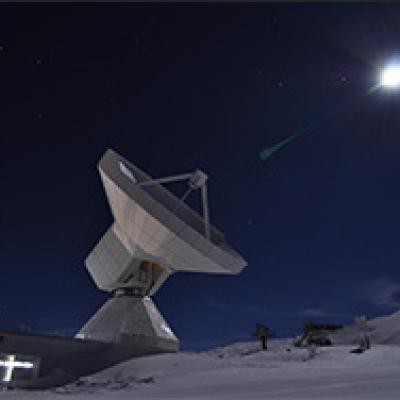RadioNet3 supported radio astronomers team observed the initial conditions of massive star formation
02.06.2014
Massive stars are responsible not only for some of the most spectacular phenomena in the Universe, but also for the production of heavy elements, key for the origin of life. An international team of astronomers has recently used the transnational access to the 30m telescope of the Institut de Radioastronomie Millimétrique (IRAM) in Spain to observe one of the darkest, densest and most quiescent molecular cloud in our Galaxy, where massive stars are in the making.
The cloud is cold, massive, and shows a complex structure with several filaments. The detailed analysis suggests that the filaments’ kinematics are governed by the global collapse of the cloud.
The team has proposed that the filaments likely formed at the initial stages of the cloud’s collapse and, as the collapse proceeds, the filaments converge and collide one onto another. As a result of the collision, the most massive condensations in the cloud were formed exactly at the locations where the filaments intersect. These condensations, or ‘cores’, are 100 times more massive than the Sun, and represent the progenitors of massive stars.
Radionet3




